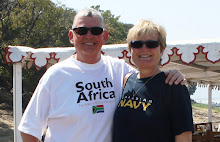 It was early and already the heat of the sun radiated through the dust, creating a milky haze over the city.
It was early and already the heat of the sun radiated through the dust, creating a milky haze over the city. We made our way slowly through the traffic to the railway station entrance, weaving through other travellers, hawkers and those who had nothing better to do than just watch. With tickets in hand we pressed on along the platform and over the railway bridge to our awaiting train, the Taj Express.
The train, scheduled to leave at 7:15 a.m. was already packed with people on wooden seating, their faces pressed against the metal grills of the open air windows. While our section of the train was allegedly air conditioned, a worker patrolled the aisles periodically, menacingly tapping a screwdriver against the rusting pipes in the ceiling. 
The train pulled out of New Delhi on time and an open window at the end of the compartment acted like a viewfinder on the passing landscape. The "express" made several stops along the way allowing us to take in the activity on the always crowded platforms.
Food sellers touted their wares cooked on makeshift grills and char wallahs poured their tea into earthenware pots to grateful customers, chatting loudly amongst themselves twenty to the dozen. After several hours we reached Agra and the highlight of our trip - the Taj Mahal.
We have all seen pictures of the Taj Mahal, the mausoleum constructed by Shah Jahan in 1631 in honour of his favourite wife, Mumtaz, but nothing prepares you.
As one approaches, the building's actual size becomes apparent, seemingly built as an optical illusion on the banks of the Yamuna River.

 We walked towards the perfectly formed ivory-coloured shrine through the gardens. Before we climbed the steep stairs to the mausoleum we donned cotton shoe covers and went inside to view the exquisite marble screen inlaid with semi-precious stones which surrounds replicas of the tombs of Shah Jahan and Mumtaz Mahal. The actual tombs lie below ground level.
We walked towards the perfectly formed ivory-coloured shrine through the gardens. Before we climbed the steep stairs to the mausoleum we donned cotton shoe covers and went inside to view the exquisite marble screen inlaid with semi-precious stones which surrounds replicas of the tombs of Shah Jahan and Mumtaz Mahal. The actual tombs lie below ground level.
In the Yamuna River below, water buffalo lazed while locals busied themselves with laundry. Upriver, the Red Fort glowed in the afternoon sun.
As the sun began to fall from the sky we returned to the Taj Mahal and took up our places in the gardens to watch the glow of the setting sun against the marble dome and its minarets. Many others were doing the same and a silence came over the crowd as if transfixed in their thoughts at the spectacle before them.
The planned early morning train trip back to Delhi the next morning was scratched because of a broken down locomotive so we clambered on board a bus for the five-hour drive. Before doing so, some of us took the opportunity to watch dawn break over the Taj Mahal. Below us, two hurriedly assembled cricket teams battled in the early morning light. A peacock strutted and scratched its way through a ruined building. Pinkish red bougainvillea framed many a picture as the impact of the sunrise's changing light and the noise of an awakening city set the scene.
All aboard the bus, we journeyed through Agra's early morning rush, passing schoolchildren on their way to their day's lessons, transported on motorized rickshaws and bikes. Men cycled with containers strapped to their mode of conveyance - some had collected milk from various farms and were delivering it to market for sale.
General chaos reigned, horns constantly blowing, every description of hand and animal drawn cart criss-crossing the road transporting sugar cane, hay, blocks of marble, dung cakes and people. The road, which was in the process of being widened felt like a battlefield with drivers happy to play chicken with the oncoming traffic.
A far cry from the serenity of the final resting place for Shah Jahan and his beloved wife.

No comments:
Post a Comment